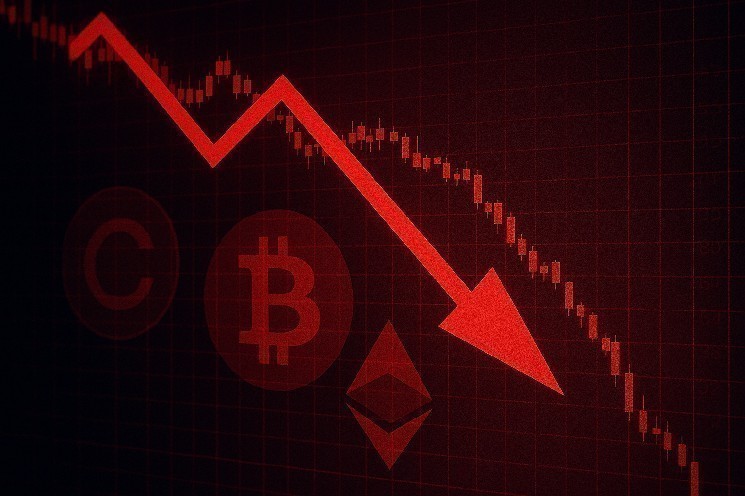- Bitcoin will fall below $90,000 and all gains in 2025 will be wiped out.
- ETF outflows and leverage-driven liquidations will exacerbate stock price declines.
- Cryptocurrency market falls by more than $1 trillion, sentiment reaches ‘extreme fear’.
Bitcoin fell below $90,000 on Wednesday, marking a devastating 28% drop from its early October peak of over $126,000.
The plunge wiped out all of the cryptocurrency’s gains in 2025, pushing the largest cryptocurrency into bear market territory.
Ethereum has fallen 6% to below $3,000, and the overall cryptocurrency market has evaporated about $1.2 trillion in value in recent weeks.
Analysts say the 43-day drawdown now ranks as one of the sharpest corrections since 2017, with forced liquidations and ETF outflows accelerating the decline.
This unwinding feels sudden, considering that just six weeks ago Bitcoin seemed unstoppable.
What makes this collapse particularly cruel is how thoroughly it dismantles the bullish narrative. Trump was supposed to be the “cryptocurrency president.”
The Spot Bitcoin ETF was supposed to allow institutional investors to buy. Instead, Bitcoin turned negative in 2025, dropping 2% after rising to +35% in October.
Investors who chased the breakout above $120,000 are now dead in the water. Such a reversal of momentum causes panic and forces margin calls.
Liquidation Cascade: Why Leverage Turned This into a Disaster
The mechanism of the accident tells it all. “Steady outflows from ETFs are also adding to the decline,” said Vettle Runde of K33 Research.
The US Spot Bitcoin ETF lost about $2.3 billion in five consecutive trades. It’s redemption from big institutions that are just walking away. When the biggest buyers start selling, smaller traders flock to follow.
The real damage comes from leverage. The government shutdown wiped out key economic indicators, creating a data vacuum.
Without employment and inflation data, the Fed’s decision to cut interest rates in December was truly uncertain. The theory that “interest rate cuts will save cryptocurrencies” suddenly disappeared.
Leveraged long positions were liquidated in a chain of forced sales. When Bitcoin fell below the average cost basis of the Spot Bitcoin ETF, algorithmic selling began.
My emotions were completely reversed. The Cryptocurrency Fear and Greed Index remains pegged at “extreme fear”, the lowest it has ever been.
Individual investors who bought nearly $125,000 are watching their unrealized losses grow. Long-term holders have not given in yet, but cracks are starting to appear in the on-chain data.
Where will Bitcoin bottom? Analysts plan for ugly scenarios
In Lunde’s base case, support lies between $84,000 and $86,000, but only if this correction reflects the recent economic downturn.
If things worsen further, reflecting the two most severe corrections in the past two years, Bitcoin could revisit its April lows near MicroStrategy’s average entry level of $74,000.
A truly bearish case opens the door to an 80% drawdown from recent highs. That would put Bitcoin in the $20,000 to $25,000 zone, but analysts say it would take a complete credit crisis for that to happen.
Currently, stock prices are trending steadily. Risk assets are not in free fall. This limits how low the value of cryptocurrencies can go without committing mass genocide.
For now, Bitcoin is caught between competing forces. Long term holders are accumulating at these levels. Educational institutions are not panicking enough to scrap them completely.
But they aren’t actively buying either. Without a macro catalyst, a change in direction from the Fed, tariff relief, or true productivity gains from AI, Bitcoin is likely to remain unstable and sloppy until early 2026.


